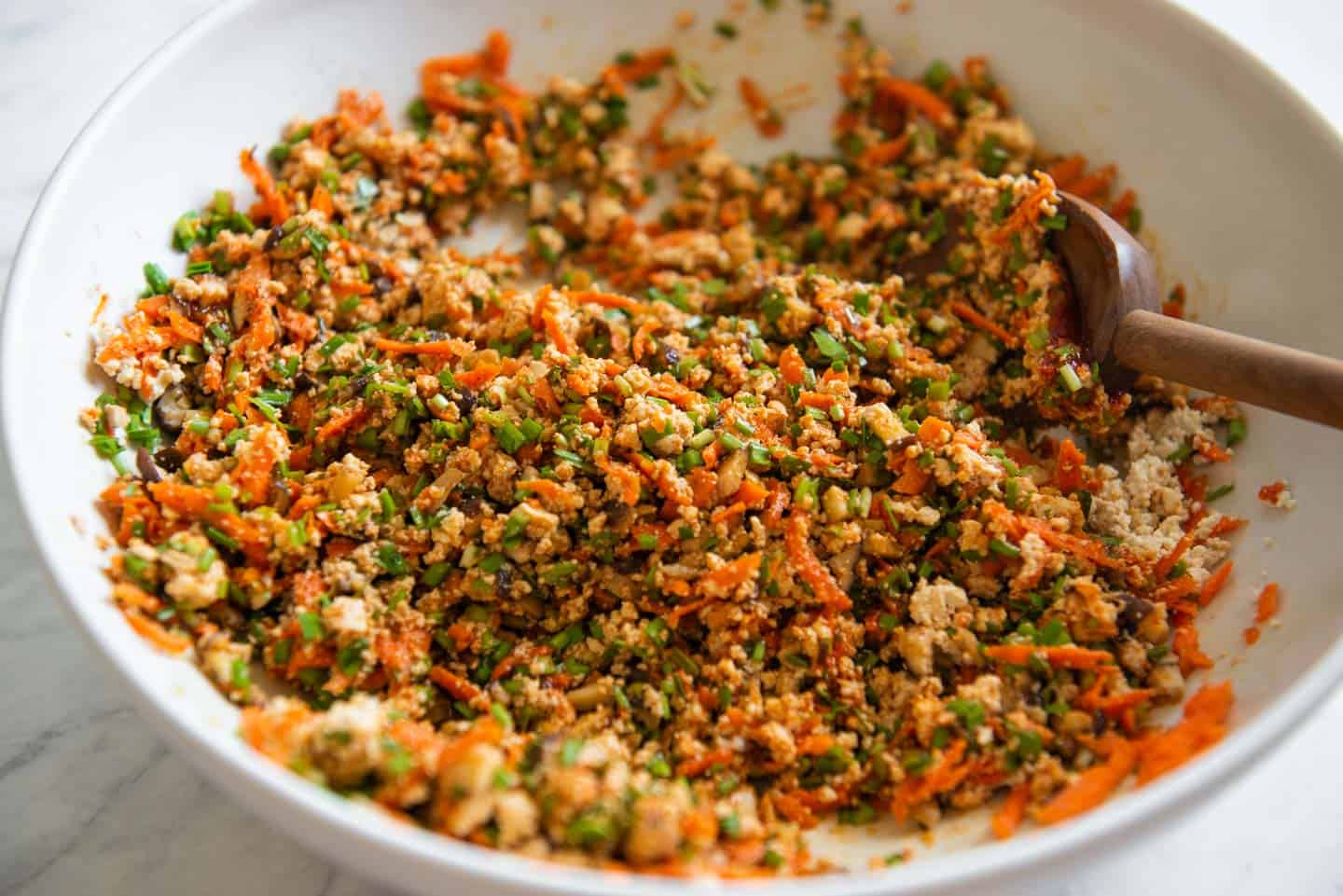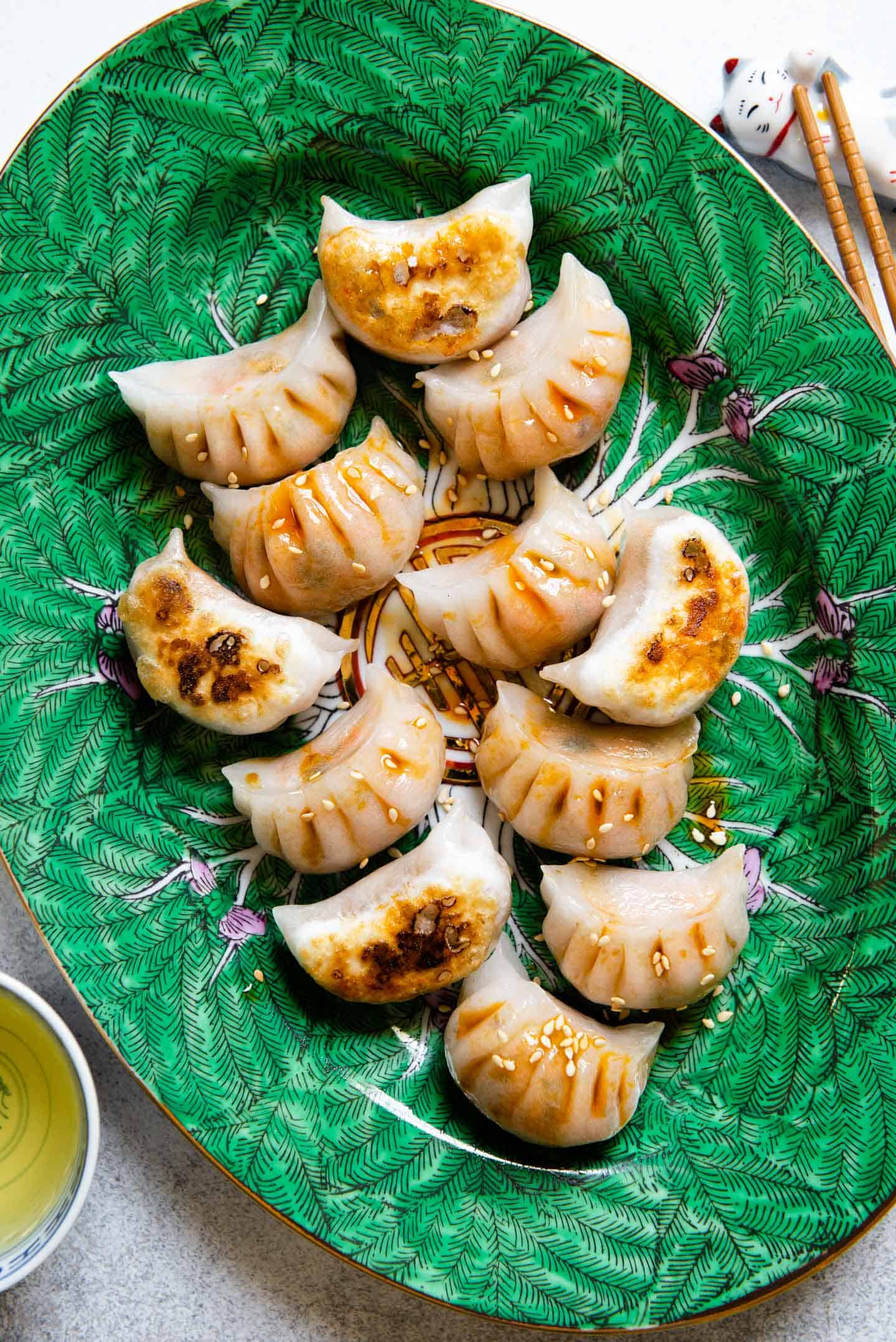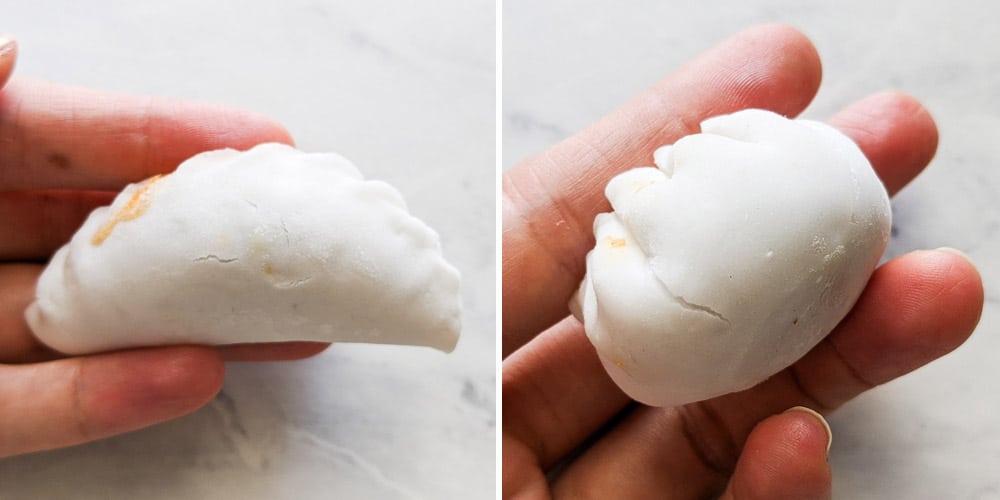- 011-782770787 | 9953869840
- info@thefatdumplings.com
- Greater Kailash-1 Delhi-110048
© 2024 THEFATDUMPLINGS.
HOW TO MAKE CRYSTAL DUMPLINGS
Crystal dumplings are one of the trickiest dumplings to make because the skin can dry out or tear easily. If this is your first time making crystal dumplings, don’t worry if you don’t get the hang of the pleating that I demonstrate below. Feel free to skip the pleating and just fold up the dumplings into a half-moon shape.
PREPARE THE FILLING
You’ll need about 7 ounces of extra-firm tofu. I bought a 14-ounce box of extra-firm tofu and sliced the block of tofu in half. Wrap the small block of tofu with paper towels, a muslin cloth, or cheesecloth. Then, place a weighted object (a bowl or saucepan works) over the wrapped tofu and press it for 15 to 20 minutes. Pressing the tofu ensures that the filling won’t be watery.
After pressing the tofu, use your hands to crumble the tofu. You should have about a cup of crumbled tofu. Then, mix the tofu with the rest of the ingredients for the filling: garlic chives (Chinese chives), carrots, shiitake mushrooms, ginger, gochujang (Korean fermented red chili paste), and tamari. Not all gochujang brands are gluten free, so be sure to check the label.
You’ll likely have a lot of filling leftover, so stir fry it with rice or vegetables.

MAKE THE DUMPLING DOUGH
Mix potato starch, tapioca starch, and salt inside a bowl. Then, mix the flours with boiling hot water. It is common in Chinese cooking to use boiling hot water to make certain dumpling doughs, especially dough made with gluten-free or low-gluten flours. The hot water “cooks” the flour and turns it into a dough that is pliable enough to shape dumplings.
Make sure to use boiling hot water to make the dough. During my recipe testing, I used water that wasn’t quite hot enough (about 140ºF to 150ºF). I ended up making a white sludge that looked more like icing than dumpling dough (see photo below). You need boiling hot water to coagulate the starches into a solid dough.
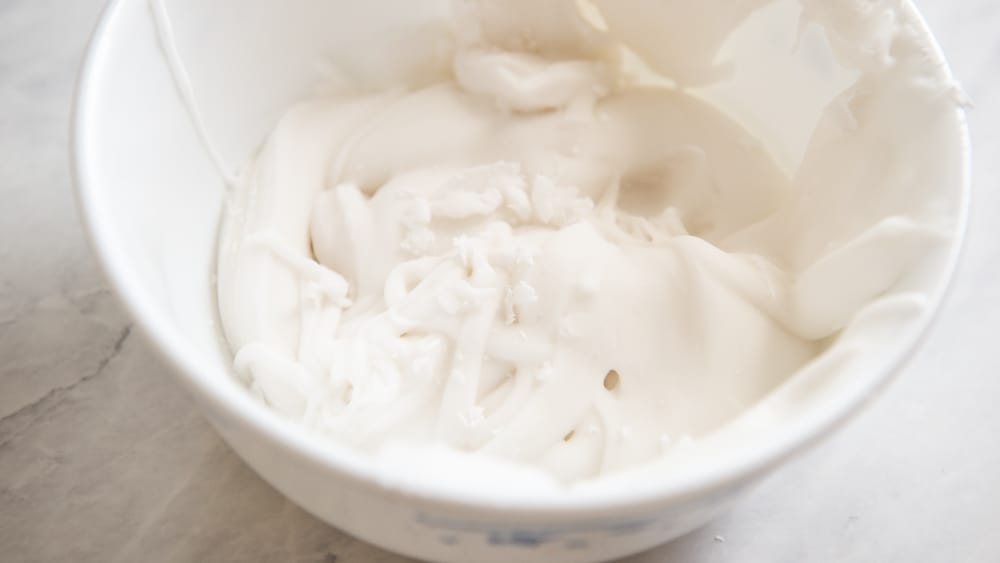
I usually boil about 1 1/2 cups of water in a saucepan and then pour 150g (or 2/3 cup) of water into the bowl with the flours. If you are worried about accidentally pouring out too much water from the saucepan, you can pour the boiling water into a measuring cup first. The water should still be hot enough for the dough. It’s good to have extra hot water handy, in case your dough turns out to be a little dry and needs more hydration.
After you mix the hot water and starches together, drizzle 1 1/2 teaspoons of oil over the dough (any neutral oil works). The oil helps make the dumpling dough even smoother. Traditionally, dumpling masters use lard instead of oil.
Start kneading the dough by hand. If you find the dough too hot to touch, cover the dough with a lid and wait 2 minutes before kneading. After you gather all the loose flour into a large lump of dough, transfer the dough to your counter. Knead the dough for another 2 to 3 minutes, until it is completely smooth. The dough will feel moist but not sticky.
At this point, some people like to rest the dough for an additional 5 to 10 minutes before making the dumplings. I usually make the dumplings right away to ensure that the dough doesn’t dry out before I make my last dumpling.
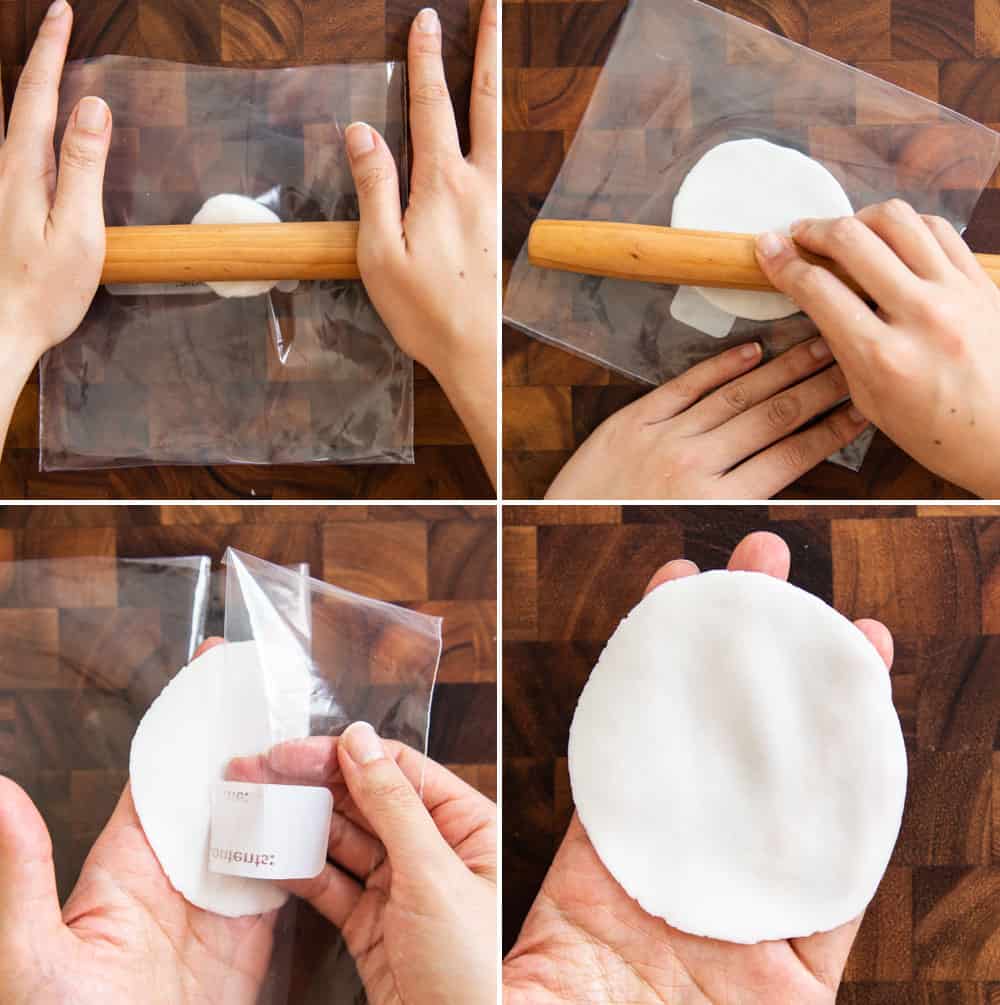
SHAPE THE DUMPLINGS
Divide the dough in half and place 1 half of dough back into the bowl and cover it with a lid or damp towel. Then, divide the other piece of dough into 12 equal pieces, about 13 to 15 grams each. Roll the small pieces of dough into balls and cover them with plastic wrap. Alternatively, place them into the bowl with the larger piece of dumpling dough and cover the bowl again. The pieces of dough shouldn’t stick together inside the bowl.
This gluten-free dough is a little tacky when you roll it out, so I recommend rolling out the dough between 2 sheets of plastic. You can cut up a quart-size ziploc bag to get the sheets of plastic. If you have a tortilla press, use it! It’ll save so much time and I wish I had one. I recommend covering the plates with plastic to easily remove the flattened out dough.
In the beginning, I roll the dumpling skin like pie crust with the double-handed rolling technique. First, I push the rolling pin forwards and backwards over the dough. Then, I rotate the dough 90 degrees and roll the dough forwards and backwards again. Repeat this 2 to 3 more times. After the dough is about 2 to 3 inches in diameter, I place the rolling pin over the center of the dumpling wrapper. Then, I push the dough out from the center in a sweeping motion. I continue doing this until the wrapper is about 3.75 inches in diameter. This sweeping method allows me to get a thin, uniform circular shape.
I usually roll out the dumpling skins one at a time and pleat the dumplings as I go. You can roll out 5 or 6 wrappers at a time and cover the rolled out skins with plastic to prevent them from drying out. Dry wrappers tend to crack easily when you are pleating the dumplings.
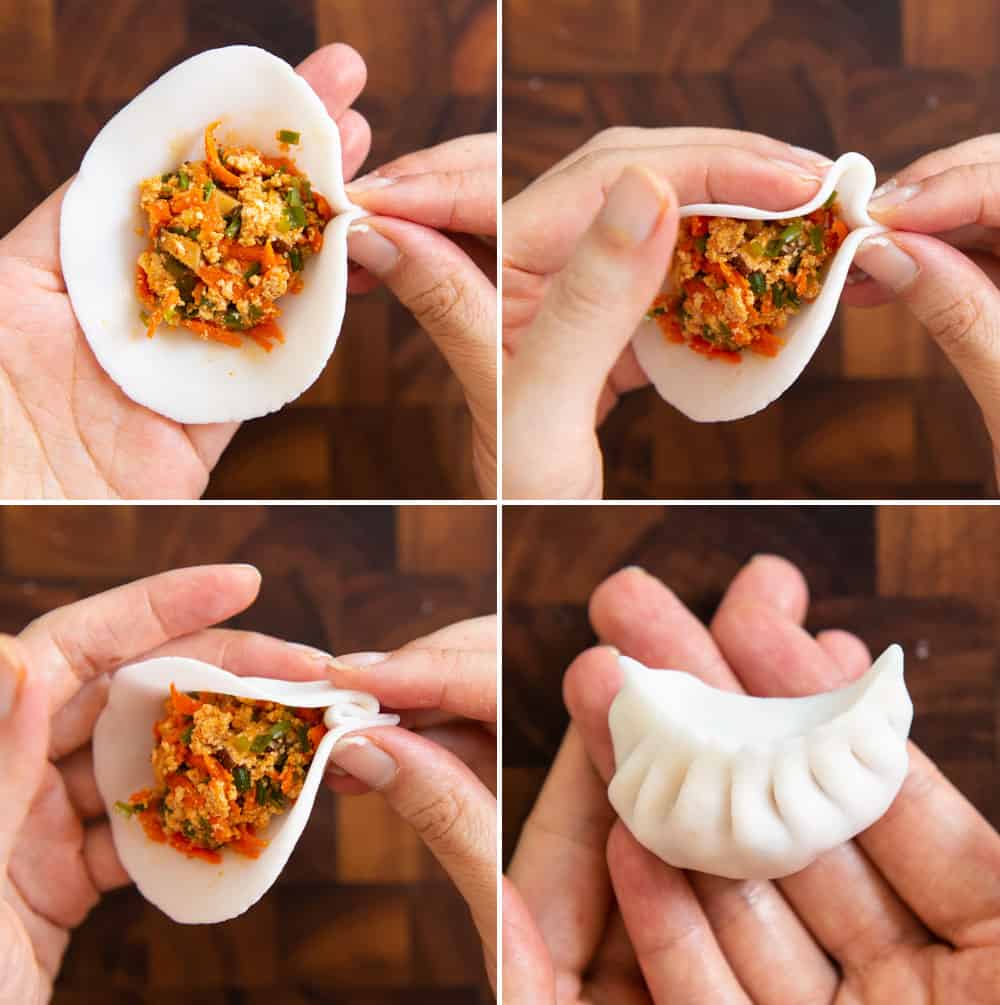
Place the dumpling skin on one hand and place about 2 teaspoons of filling into the center. Then, pleat them like you would potstickers (see photos above for reference). Don’t overfill the dumpling because the dumpling skin will tear easily.
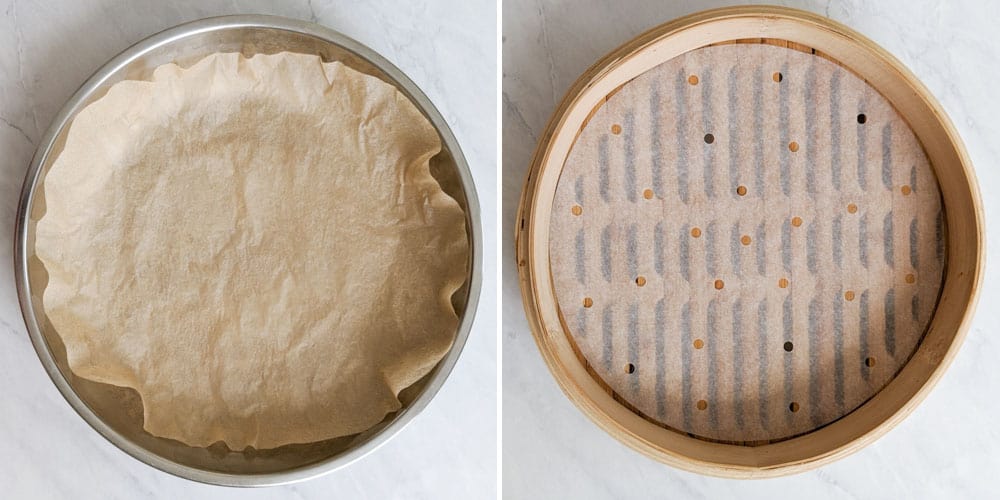
Transfer the pleated dumpling to a 9” to 10” circular pan or steamer lined with parchment paper. Cover the pan or steamer with a towel to keep the dumplings from drying out. I can usually fit a dozen dumplings on a 9” to 10” pan.
Continue shaping dumpling skins and pleating dumplings until you have used up all the dough.
WHAT IF MY DOUGH IS DRYING OUT BEFORE I ROLL IT?
I work very slowly when I make these dumplings. Sometimes, the dough will be a little dry when I’m making the last few dumplings. There are two things you can do if the dough is feeling dry:
Use your fingers to knead and work the dough until the outside of the small dough pieces are feeling moist again.
Lightly dip the small dough pieces into some water and work the moisture into the dough.
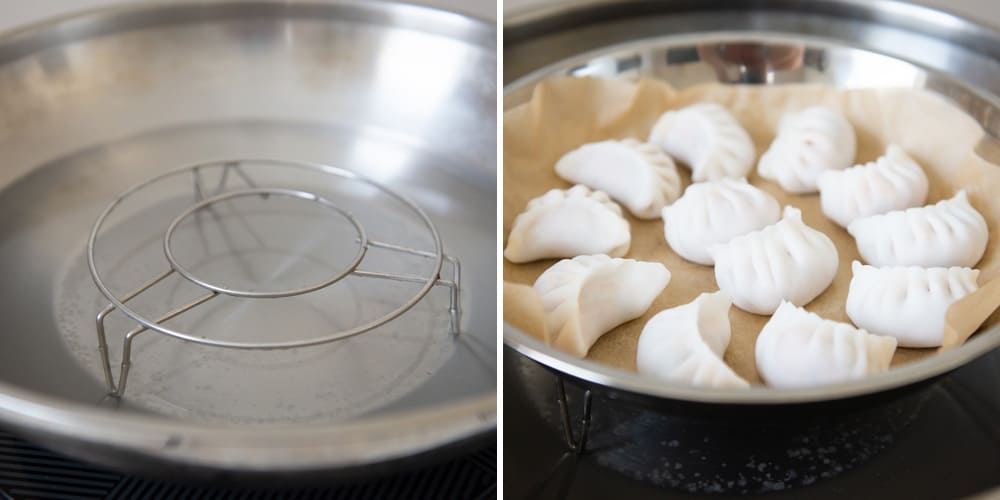
STEAM THE DUMPLINGS
Fill a wok with water and place a steaming rack in the center. Make sure that the water level is below the top of the steaming rack (I usually leave about a 1/4 to 1/2-inch clearance). Bring the water to boil. Then, carefully lower one of the pans filled with dumplings onto the steaming rack and cover the wok. Steam the dumplings for about 5 to 6 minutes on high heat.
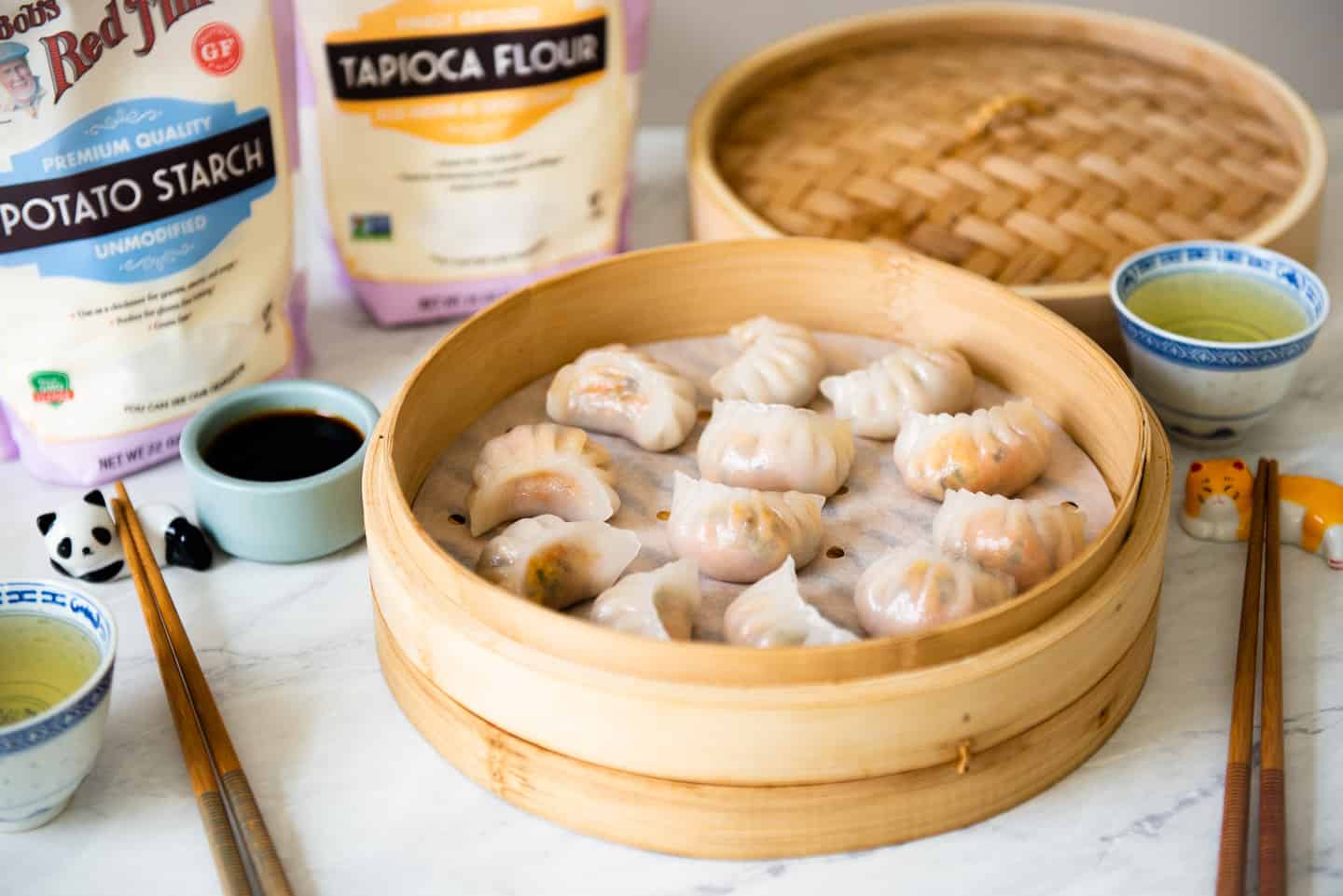
© 2024 thefatdumplings.



